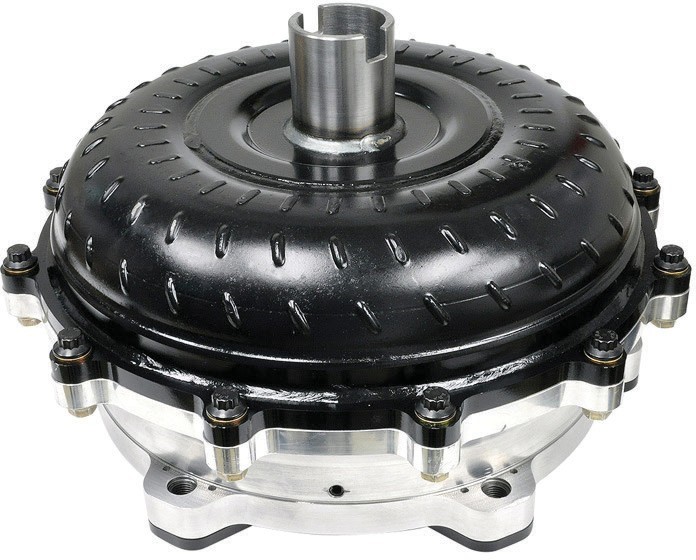The OPEC oil embargo that began in 1973, with its resulting fuel shortages and soaring gas prices, certainly doesn’t bring back fond memories to those old enough to remember being a part of the endless lines of cars leading to the local filling station. The trying times reduced the demand for large, fuel-thirsty cars and made smaller, fuel-efficient imports more appealing, forcing domestic auto makers to make significant improvements in fuel efficiency. It wasn’t long before the domestics were debuting smaller, lighter cars with computer-controlled engines and transmissions, electronic fuel injection, automatic overdrive transmissions, and lock-up torque converters, all with the intent of improving fuel efficiency.
Although Packard and Studebaker had pioneered the first lock-up torque converter in 1949, it was discontinued shortly thereafter due to the added cost and complexity. However, priorities began to change in the mid-1970’s due to the push for increased fuel efficiency and Chrysler followed with a modern version in 1978. Chrysler’s version employed a hydraulically activated single-disc clutch within the converter that applied once the vehicle was up to speed, locking up the converter to provide a 1:1 mechanical connection between the engine and transmission. The converter would then unlock when the vehicle slowed or if kickdown was activated.
It subsequently eliminated slippage between the engine and transmission when the vehicle was up to speed, reducing engine RPM’s slightly and improving fuel efficiency. General Motors followed with their own version the following year with the release of the Turbo-Hydramatic 200C transmission, essentially a TH-200 with lock-up converter functions added. The auto makers continued to refine their converters over the years, eventually upgrading many to a multi-disc lock-up design for improved function and durability.
Since the vast majority of late model, automatic transmission-equipped muscle cars are fitted with lock-up converters as they roll off the showroom floor, manufacturer’s including ATI Racing, Hughes Performance, TCI Automotive, and Transmission Specialties offer direct replacement, high-performance units that deliver increased acceleration and quicker elapsed times through higher stall speeds, while retaining their OEM lock-up functions.
These replacement units are truly street worthy and effectively create a “best of both worlds” scenario where the converter has a higher stall speed than the OEM unit, yet without the slippage that is typically associated with a traditional high stall converter. A wide variety of units are available for most popular late model muscle cars including the Ford Mustang, Dodge Challenger, Chevy Camaro, and Corvette.
Although lock-up converters have been used sporadically in drag racing for many years with varying degrees of success, advancements in technology combined with the popularity of Pro Modified and other heads-up classes have helped drive their popularity. David Caine of ATI states that improving the durability of the multi-disc lock-up clutch and reducing engagement time has been critical to the success of the units. “Lock-up converters have truly evolved”, stated Caine.
“During initial development, some manufacturer’s units took well over a second to apply but we’ve reduced it down to as little as 0.3 seconds”, according to Caine. Shortly after the car is launched, the lock-up clutch is activated by a solenoid at the desired time, eliminating converter slippage, thereby reducing elapsed times and increasing miles per hour. Many racers have recorded significant improvements after switching to a lock-up converter.

ATI 8″ Lock-Up Torque Converter
When choosing a lock-up converter for an ultra-high horsepower, heads-up type drag race application, it’s mandatory that an aftermarket, SFI-approved Powerglide, or Turbo 400 transmission case and accompanying bellhousing are selected as well. The heavy-duty case and bellhousing not only provide durability, but also eliminate the need for a transmission shield, blanket, or flexplate shield.
The case must then be subjected to specific machining operations prior to assembly and fitted with a special stator support, input shaft with forward drum, solenoid kit, and related components to provide lock-up functions, according to Caine. Because a lock-up converter is a bit taller than the conventional unit that it replaces, a bellhousing spacer or extended bellhousing, available from ATI, is required.
Some manufacturers package the necessary components in kit form, allowing qualified builders to convert an existing, race-prepped transmission to a lock-up configuration. If a racer is building a new combination, or perhaps starting from scratch, both ATI and Coan Engineering offer a full selection of lock-up converters and transmissions.
While the lock-up converter has certainly evolved since its unheralded introduction in 1949, it has certainly proven worthy over the years to help improve the performance of virtually any vehicle fitted with an automatic transmission, regardless whether it’s a daily driver or a full-on, heads-up style drag car.